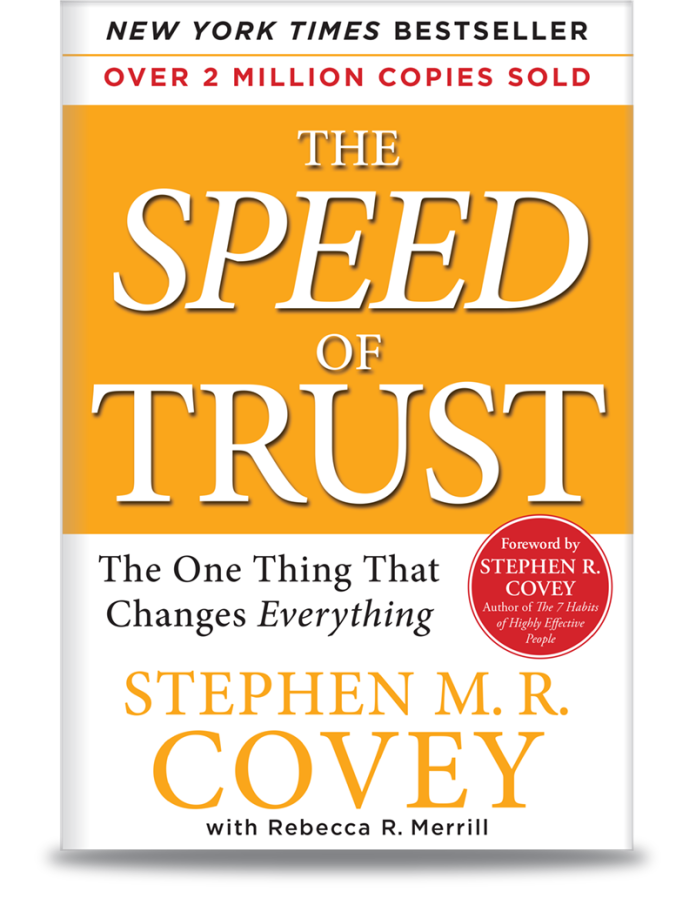
As we look ahead to the new year, amidst the tumultuous change happening all around us, I’ve reflected on some critical constants. A few key insights have risen to the top, which I believe will be differentiators—particularly considering what both organizational leaders, and HR and learning and development (L&D) professionals, are searching for most.
The Franklin Covey organization has a library of microlearning content people can search for bite-sized resources on a particular topic or subject. From thousands of searches, it’s no surprise that both during and post-pandemic, trust was, and continues to be, the #1 searched topic globally by HR/L&D, and in the top 5 for organizational leaders. HR wants to get better at trust, and leaders want and need their help.
In my book, “The Speed of Trust,” I assert that trust is a learnable skill. This assertion continues to be a paradigm shift for most people because amidst the constantly changing landscape of work being done today, low trust typically is viewed as an immovable obstacle. Yet with so many leaders and organizations taking on big issues—whether the focus is remote/hybrid work, collaboration, innovation, engagement, inclusion, leading change, attracting and retaining top talent, multiple generations at work, you name it—navigating all of those things is dramatically more difficult when trust is low. As leaders’ efforts are slowed, or even grind to a halt, there is one question I’m asked more than any other:
“How do you build trust on purpose?”
The simplest answer: Through credibility and behavior.
Your credibility—who you are, whether no one is looking, or whether everyone is looking—is the foundation for all trust. It’s your brand. Your behavior—what you do and how you do it—signals to others that your brand or reputation is trustworthy, and enables you to effectively expand trust in meaningful and impactful ways.
The real power of this credibility and behavior construct is that it scales. Moving the needle on trust boils down to these same two constants, whether with a person, on a team, or throughout an organization.
Trust Is Measurable
When I work with individuals, I’ll often run an assessment that helps them see clearly where they stack up in both credibility and behavior. This helps people understand not just trust levels, but also the components that drive those levels. It looks at what makes individuals credible, and what’s holding them back. It also looks at what behaviors consistently show up that help them build trust, as well as what I call “counterfeit behaviors” that we become scripted for in organizational life, but that consistently diminish trust in subtle and significant ways.
You can run a similar trust assessment for a team. Again, not just measuring the level of trust but also assessing the building blocks of credibility and behavior. “How credible are we as a team? What behaviors are helping us, and what counterfeit behaviors trip us up?” It’s the same two constants when expanding the assessment out to a department or to an entire organization.
The credibility and behavior construct itself is simple, but don’t be deceived by its simplicity—that’s actually its greatest strength. It’s what makes trust accessible as a learnable skill. It is simple, but not easy. The practical framework for building trust is robust, and necessarily so, because its application is crucial in every relationship and in every context. But ultimately, it all boils down to the twin constants of credibility and behavior. In a world of volatility and uncertainty, those who succeed best are going back to the constants again and again.
“No [Person] Steps in the Same River Twice”
Greek philosopher Heraclitus is known for his focus on the idea that things are always changing, what he called “Universal Flux.” More than 2,500 years later, one of his most popular statements not only still rings true, but today is possibly louder than ever before. The full quote states, “No man ever steps into the same river twice, for it’s not the same river, and he’s not the same man.”
I recently had the privilege of being invited to speak to leaders at a global organization who were navigating crisis brought on by unprecedented change. They’d experienced large-scale layoffs, and nearly 80 percent of the leadership team was new. These leaders inherited a culture filled with great people but, understandably, low trust. My team had partnered in the past with two of the new leaders: the CHRO, and the head of Talent Development. These women faced a river of serious change at previous organizations and led a systematic process for building a high-trust culture to navigate it—and came out far stronger on the other side. Although change was still at the heart of the new challenge, this was definitely not the same river. But because trust is a learnable skill, and they’d been developing it along the way, they were not the same people.
The challenge this organization faced fell squarely in the realm of HR and Talent Development, yet so often HR and training professionals run into a wall, competing with other executives and functions for resources, attention, and priority. But in this case there was no wall—the new CEO trusted them. Why? They’d built immense personal credibility and behaved in ways that gave them a level of influence that went far beyond the formal authority a standard organizational structure might have afforded them. Their charge now is to bring tools to others throughout the organization to help them do the same.
But What if My Boss/VP/CEO Doesn’t Trust?
Years ago, I worked with an organization that had gone deep in “The Speed of Trust.” They had trained 40,000-plus employees, from the truck drivers to the CEO, and had become a case study. When I would tell the story, I often would have HR professionals comment longingly that they wish they had a CEO like this, who was supportive of organization-wide training on trust. While it ultimately arrived at that point, it certainly didn’t start out that way.
Instead, it all began with an upper-midlevel leader named Janita. She saw the need for greater trust in the culture, but when she’d approached senior leaders, she was told, “No.” At the time, this was a hard-driving, task-oriented, “command-and-control” culture. She could see where the organization was headed and initially was deflated by the negative response. Rather than wait for others to see what she saw, Janita decided to start with herself—her own credibility and her own behavior—and invited her team to do the same.
In a role that touched essentially every other function in the organization, she saw that if she and her team got good at trust, it would make every other aspect of their jobs easier and better—and she was right. Janita’s team began to have great success. People experienced this, saw what they were accomplishing, and started asking, “How did you do this? How did you deliver these great results and outcomes while also increasing your engagement scores?” She responded by sharing her approach and mentoring others.
Her performance and influence began to ripple throughout the company and eventually made it to the CEO. The person who had told her, “No,” in the beginning now was inspired by her leadership. She was not in a formal position to unilaterally decide where to lead the company culture, but leadership is a choice, not a position. She chose to lead from the inside-out and focus on trust as a learnable skill for herself. She built her own credibility and changed her own behavior—and that of her team—and by doing so, she ultimately was entrusted to lead the rest of the organization down the same path.
You Don’t Need Permission to Lead
Think about any initiative on your plate right now. Is it going how you’d like? What could make it go better? Consider trust the hidden variable. It determines the speed at which you can move, and the cost of everything. Whether you need more buy-in to get it off the ground, or even permission to realign a misaligned, outdated system—you don’t need permission to lead.
Don’t underestimate your ability to influence and inspire others through your own credibility and behavior. It will happen faster than you think.




